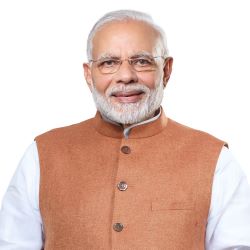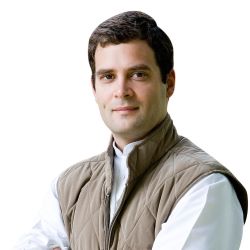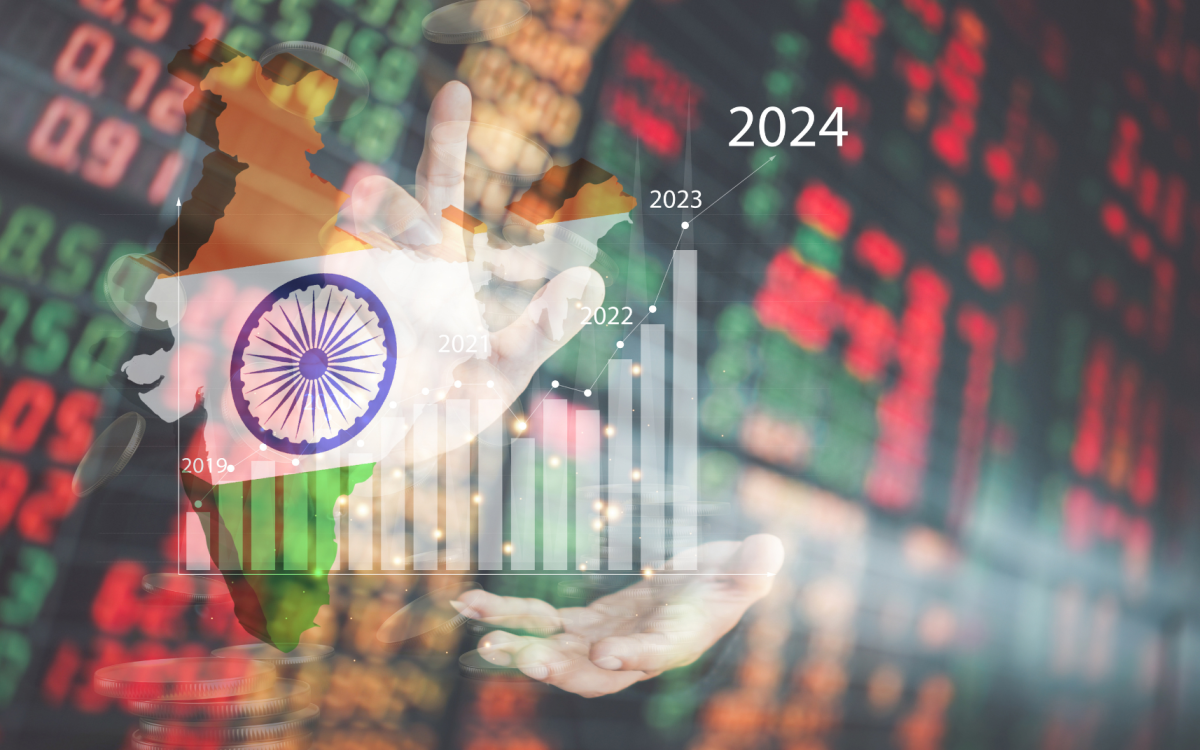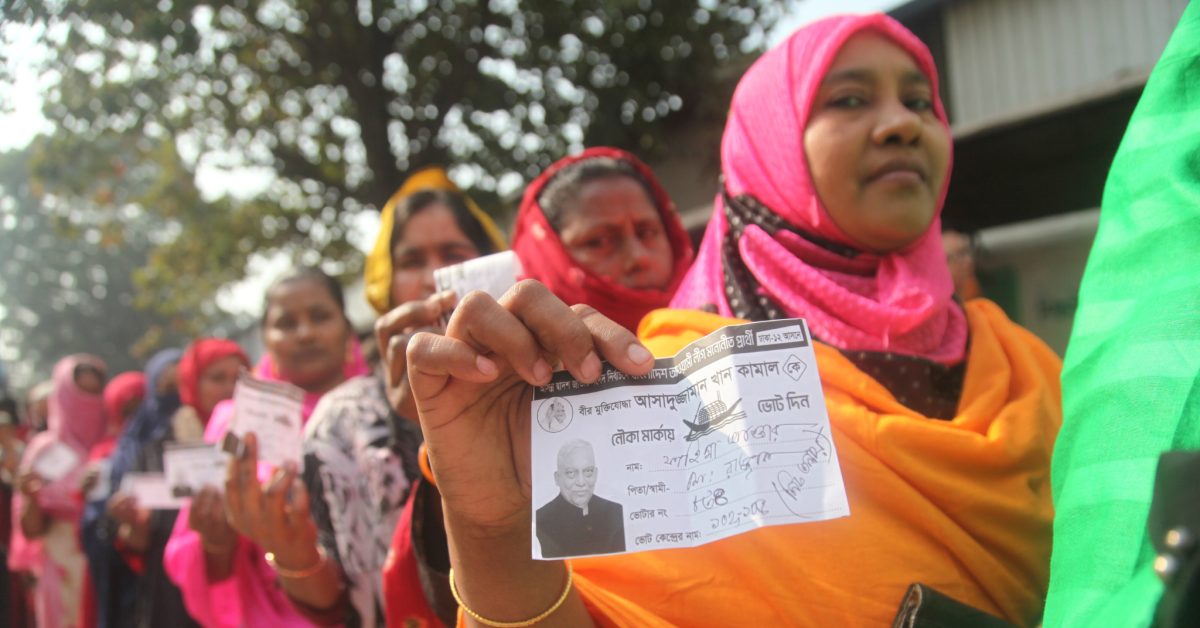Election Primer: India General Elections 2024
India is set to elect a new government by the first week of June. The Election Commission has announced a seven-phase election schedule spanning April, May, and June. In most constituencies, two major political coalitions will face off: the National Democratic Alliance (NDA) led by the ruling Bhartiya Janta Party (BJP) and the Indian National Developmental Inclusive Alliance (INDIA) led by the Indian National Congress (INC). Pre-election polls strongly suggest a clear victory for the NDA and a third consecutive term for Prime Minister Narendra Modi. An NDA victory would maintain continuity in economic policies, and ongoing negotiations for Free Trade Agreements (FTAs) and welfare schemes.
Read on for EGA India’s analysis and insight into what’s at stake, the main players, the latest polls, and the implications if those polls play out. Our team has also included an economic and geopolitical snapshot to level set on what the new government will be working with.
Election schedule announced
On March 16, the Election Commission of India announced the 18th Lok Sabha’s general elections, which will span from April 19 to June 1. The elections will be conducted in seven phases over 44 days, and the results will be announced on June 4, 2024.
This election will be the world’s largest-ever election, surpassing the 2019 general elections, and will be the longest-held general election in India. The election aims to elect 543 members of the Lok Sabha—Parliament’s lower chamber.
Phase | Date | States/Union Territories | Constituencies |
Phase 1 | April 19 | 21 | 102 |
Phase 2 | April 26 | 13 | 89 |
Phase 3 | May 7 | 12 | 94 |
Phase 4 | May 13 | 10 | 96 |
Phase 5 | May 20 | 8 | 49 |
Phase 6 | May 25 | 7 | 57 |
Phase 7 | June 1 | 8 | 57 |
In addition to the general elections, four states—Andhra Pradesh, Odisha, Arunachal Pradesh, and Sikkim—will hold simultaneous legislative assembly elections. The results of the state assemblies will be announced along with the national election on June 4.
State Assembly | Dates |
Andhra Pradesh | May 13 |
Odisha | May 3, May 20, May 25, June 1 |
Sikkim | April 19 |
Arunachal Pradesh | April 19 |
What’s at stake
The Indian Parliament is bicameral, its two chambers being the Lok Sabha (lower) and the Rajya Sabha (upper). Members of the Lok Sabha are directly elected by the people, and allocation of its seats ensures that all states receive fair representation based on population. Each state is divided into constituencies, with the number of seats assigned to each reflecting the population as closely as possible. Elections for the Lok Sabha follow the First Past the Post System, where the candidate with the most votes wins the seat in their constituency.
The upcoming Lok Sabha elections in 2024 are expected to see a pitched battle between two major political coalitions: BJP-led National Democratic Alliance (NDA) and the Congress-led Indian National Developmental Inclusive Alliance (INDIA). BJP is seeking a third term in 2024 and is confident of its victory, riding high on the outcome of the recent state elections in Rajasthan, Chhattisgarh, and Madhya Pradesh, where the BJP won comprehensively.
- The National Democratic Alliance (NDA): In the upcoming general elections, the BJP, led by Prime Minister Narendra Modi, will once again lead the NDA, which includes 37 regional parties such as the Shiv Sena (Eknath Shinde), the Janata Dal (United), the Lok Janshakti Party, the Nationalist Congress Party (Ajit Pawar), and the Telugu Desam Party.
- Indian National Developmental Inclusive Alliance (INDIA): The INDIA is a new coalition of 27 opposition parties led by the Indian National Congress and major State-level parties, including the Aam Aadmi Party (AAP), Samajwadi Party (SP), Trinamool Congress (TMC), Rashtriya Janata Dal (RJD), Nationalist Congress Party (Sharad Pawar), Shiv Sena (Uddhav Balasaheb Thackeray), and others.
- Fence sitters like the ruling BJD in Odisha, YSRCP in Andhra Pradesh, and regional parties in the northeast will most likely align with the winning block post polls.
Party Position in the outgoing Lok Sabha
The ruling NDA has a mammoth majority in the outgoing Lok Sabha with 353 Members of Parliament (MP). The Opposition led by INC under the umbrella of United Progressive Alliance (UPA) had a total of 90 MPs in its fold.
Coalition Composition

Power players
 Narendra Modi, Prime Minister of India
Narendra Modi, Prime Minister of India
PM Modi is running for a third straight term. In the run-up to the polls, his government has sent a clear message through the interim budget 2024 that they will focus on GYAN (Gareeb: poor, Yuva: youth, Annadata: farmers, Nari shakti: women).
- The government proposed buying three pulse crops (seeds of dry legumes) as well as maize and cotton at the minimum support price (MSP) for five years to improve farmer conditions.
- The BJP is running a “Modi ki Guarantee” campaign to highlight the government’s commitment to people’s welfare and development, including financial assistance for married women, housing benefits, and free health services.
- The government’s Viksit Bharat 2047 initiative aims to generate USD 7 trillion in GDP by 2027 and USD 30 trillion by 2047.
 Rahul Gandhi, Leader, INDIA
Rahul Gandhi, Leader, INDIA
Leading the INDIA alliance, the INC leader Rahul Gandhi launched the second leg of his Nyay Yatra (March for Justice), during which he traveled through 14 states. The opposition leader has made a series of promises to be fulfilled once the INDIA bloc is voted to power.
- Making the MSP a legal guarantee, promising a nationwide caste census, and prioritizing the filling of existing government vacancies will all likely be prominent themes in the Congress’s manifesto for the 2024 Lok Sabha election.
- INDIA promised to implement the “Yuva Nyay” (Justice for Youth) scheme, which includes an assurance to fill 3 million government job seats, guaranteed one-year apprenticeship for eligible degree holders, protection for social security workers and farmers as well as a law to curb cheating on exams.
- INDIA also promised the “Nari Nyay” (Justice for Women) scheme, which promises to give poor women INR 100,000 per year (USD 1,200); reserve 50% of central government jobs for women; and double the support for Accredited Social Health Activist (ASHA), Anganwadi workers and helpers, and mid-day meal workers, among other schemes.
Opinion Polls
NDA has a clear edge
Most opinion polls for the general elections have predicted a clear victory for the ruling BJP-led NDA.
- As per the India TV-CNX opinion poll, NDA may win 378 seats, the INDIA alliance minus Trinamool Congress could win 98 seats, while others including TMC could win 67. The Congress party could be reduced to below 40 seats for the first time in India’s electoral history.
- According to the Mood of The Nation opinion poll, NDA may win 335 seats while the INDIA alliance is likely to win 166 seats.
Opposition is disunited
After failing to capture a majority in both the 2014 and 2019 general elections, the principal opposition party, the Indian National Congress, has formed a coalition with regional parties. However, the coalition has struggled to put up joint candidates. Just months ahead of the polls, the alliance suffered a major blow when one of the key constituents, Bihar Chief Minister Nitish Kumar-led JDU (Janata Dal-United), decided to part ways and join the NDA ranks. The ruling party in West Bengal-Trinamool Congress (TMC) has also announced that it will contest elections independently.
Possible implications of an NDA win
If the NDA (National Democratic Alliance) is voted back to power, it could have several policy implications across various sectors.
- Continuity in economic reforms: Further implementation of economic reforms to spur growth and attract investment. Emphasis on fiscal discipline and measures to address inflation and fiscal deficit.
- Infrastructure development: Accelerated development of infrastructure projects, especially in transportation, energy, and digital infrastructure. Focus on expanding connectivity through roadways, railways, and waterways.
- Investment and job creation: Promotion of Make in India initiatives to boost manufacturing and create employment opportunities. Encouragement of foreign investments through ease of doing business reforms and policy incentives.
- Agricultural reforms: Continued implementation of agricultural reforms to improve farmers’ income and productivity. Support for agricultural infrastructure development and market reforms.
- Social welfare schemes: Expansion and enhancement of social welfare schemes like Ayushman Bharat and PM-KISAN. Focus on inclusive development with targeted policies for marginalized communities.
- Environmental sustainability: Continued commitment to environmental conservation and sustainable development practices. Promotion of renewable energy initiatives and adoption of cleaner technologies.
- Healthcare and education: Enhancement of healthcare infrastructure and access to quality healthcare services. Focus on improving education standards and promoting skill development initiatives.
- Foreign policy and international relations: Strengthening of strategic partnerships with key allies and focus on regional stability. Continued efforts towards economic diplomacy and trade agreements to enhance global engagements.
India Snapshot: Macroeconomics and Geopolitics
India’s economy showcases robust recovery post-pandemic, maintaining impressive growth amidst global challenges. Fueled by financial sector strength and ongoing reforms, it is predicted to become the world’s third largest economy with a GDP of USD 5 trillion in the next three years.
Key Economic Indicators
- GDP growth: Expected to grow above 7% annually, driven by structural reforms despite potential geopolitical risks.
- Inflation: Currently at 5.1%, indicating price stability.
- Current account deficit (CAD): Narrowed to 1.0% of GDP in fiscal 2023, reflecting improved economic stability.
- Fiscal deficit: Targeted at 5.1% of GDP in fiscal year 2024, signaling prudent fiscal management.
- Foreign exchange reserves: Increased to USD 619 billion, providing resilience against external shocks.
- Investment climate: Government secured investment commitments of INR 3 trillion, driving capex activities and fostering economic growth.
External Relations
India–US Economic Relations
- Bilateral trade with the US exceeded USD 191 billion in 2022, making the US India’s largest trading partner.
- US investments in India and Indian investments in the US strengthen economic ties, creating jobs and value.
India–Europe Economic Relations
- EU is India’s third largest trading partner, with trade in goods totaling EUR 88 billion in 2021.
- India-EFTA Free Trade Agreement expected to bring USD 100 billion investment and create one million jobs.
India–China Economic Relations
- Bilateral trade growth with China continues, albeit with a significant trade deficit.
- Market access challenges persist in key sectors like agriculture and pharmaceuticals, influenced by geopolitical tensions.
Materials presented by EGA India and The Fight for Power team. For additional information, reach out to Anand.Patel@edelmanega.com to learn more.
EGA's Fight for Power is your guide to the moments that matter this global election year, what comes next, and what all of this means for industries and sectors. Email fightforpower@edelmanega.com to receive global election updates from The Fight for Power team.



